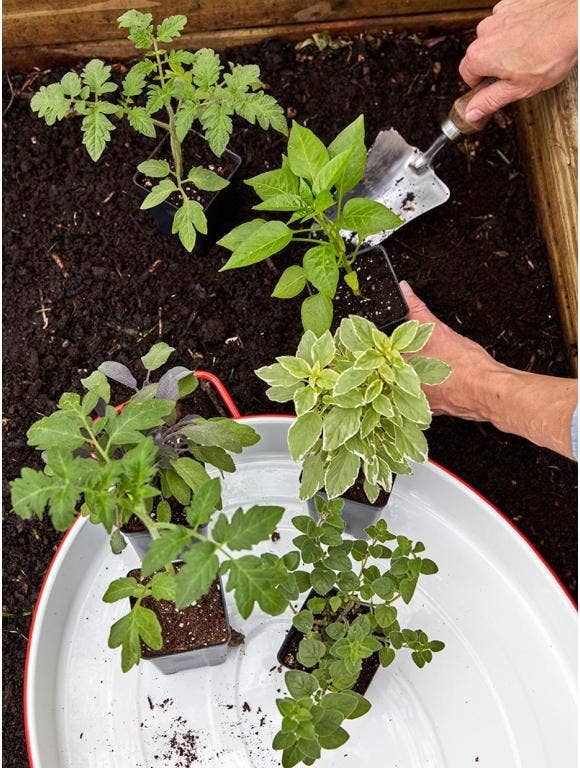
As the current growing season wraps up, it's time to start planning your garden for the next season. Before you dig, however, it's essential to look at how your garden performed and what you can do differently. Follow these tips to assess how your crops fared and understand when to move plants in the garden.
Reasons to Move Your Plants
It can be frustrating to put all your effort into your garden only to produce a minimal harvest. Whether your crop was small or your plants were diseased, many factors can have an impact. Here are some reasons why your garden didn't perform well and how moving your plants might help.
The Amount of Sunlight
Sunlight is critical in any garden, especially for vegetables and fruits, which typically require six to eight hours of direct sunlight daily. Undersized plants or ones that didn't produce an ample harvest might not have received enough sunlight. If your current plot doesn't get enough sun, consider moving the bed to a different area in your yard with more sun exposure.
Or, instead of moving your entire plot, try planting partial-shade plants, which need less sunlight, like certain leaf crops, in the space instead and grow full-sun vegetables in a different area.
Planting Repeat Crops
Did your tomato plants thrive in your garden bed last year only to fall flat this season? If you plant the same crops in the same garden bed each year, you might notice a decrease in your harvest and an increase in pests and disease. Certain families of plants feed differently on soil nutrients than others. The nightshade family, which includes peppers and tomatoes, requires a good amount of nitrogen and phosphorous. When you plant these over and over in the same bed, the soil can become deficient and unable to support the nutrient needs of those plants in subsequent seasons. It can also lead to an increase in disease and pests that like to feed on specific plants.
Crop rotation can help solve these problems. The basic idea is that if you rotate your vegetables between different growing beds each year, the pests and diseases will lose their hosts. It will also balance soil nutrients. For example, planting legumes where your tomatoes were will produce nitrogen to replenish what the tomatoes took. The key to successful crop rotation is focusing on plant families. If you planted broccoli one season, then you'll want to move all brassicas, like cauliflower or Brussel sprouts, to a new bed the following year.
Proximity to Other Plants
You may need to move your garden plot if it's too close to trees and bushes. When smaller plants are situated too close to large ones, not every plant will thrive. Planting a growing bed near trees or large shrubs can cause plants to compete for water and nutrients. Larger and deeper rooted plants draw those essentials away from smaller crops.
Plant Overcrowding
If your plants are small or suffer from blight or mildew, they might be overcrowded. When your seedlings are little, it can be tempting to plant several of them close together, but as they grow bigger, they can suffer. Most vegetables thrive when spaced apart, allowing for air circulation. Instead of trying to squeeze everything you want to grow in one plot, move some plants to a second space, giving them room to breathe. Always be sure to follow the spacing instructions on the seed packet.
Pollinators and Pests
If your plants are growing well, but they simply aren't producing a harvest, they might not have access to pollinators. Try hand-pollinating or consider moving your garden plot closer to a flower bed or other area of your yard that attracts pollinators.
While you want to attract bees and butterflies, you don't want to encourage pests. If gophers or other small animals are getting to your crops before you are, move your garden to a raised bed with an enclosure. Utilizing pest control supplies like netting or repellants is an easy solution that won't require moving your entire plot.
When to Move Plants in the Garden
While most vegetables are annuals, the timing is vital if you're moving garden plants that are perennials, like citrus and berries. The best time to move perennials will depend on your specific climate and what plants you hope to move. See Burpee's Perennial Growing Guides for more information by plant. Before moving plants, trim the foliage back and dig the plants out using a wide perimeter to protect the root system. Once the plant is in its new spot, water it well and keep a close eye on moisture levels over the next few weeks.
Don't get discouraged if your garden didn't produce as well as you expected. Over time, you'll learn what works best with your growing space, and you'll enjoy a plentiful harvest.
For more tips on growing vegetables and fruit, check out Burpee's Garden Guide.



